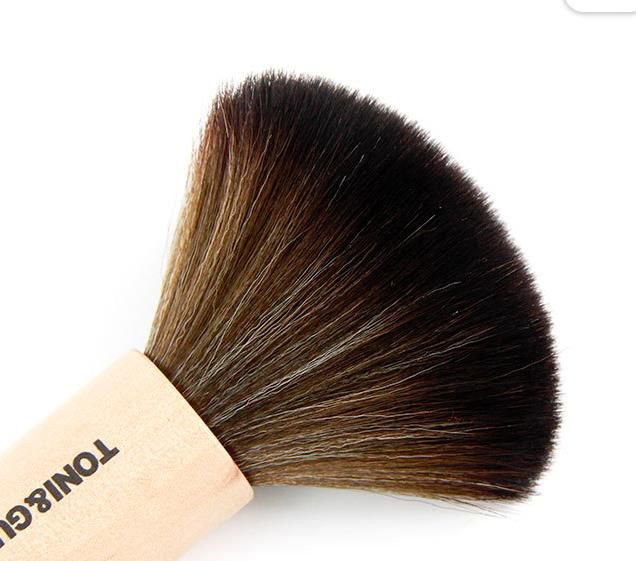Industry news
Market Penetration of Electric Shaving Brushes: Challenges and Opportunities
- 986 Views
- 2025-07-31 02:30:50
Market Penetration of Electric Shaving Brushes: Navigating Challenges and Seizing Opportunities
The global men’s grooming industry is witnessing a paradigm shift, driven by evolving consumer preferences for efficiency, technology, and personalized experiences. Within this landscape, electric shaving brushes—an innovative fusion of traditional grooming tools and modern engineering—are emerging as a niche yet promising segment. While traditional shaving brushes (such as badger hair or synthetic bristle variants) have long dominated the market, electric models are gradually gaining traction, particularly among tech-savvy and time-conscious consumers. However, their path to widespread market penetration is marked by distinct challenges and untapped opportunities that manufacturers must address to unlock growth.

The Current Market Landscape
Traditional shaving brushes, celebrated for their ability to create rich lathers and deliver a luxurious, ritualistic experience, remain a staple in many households, especially among premium consumers. In contrast, electric shaving brushes—equipped with motorized bristles, rechargeable batteries, and smart features like adjustable vibration modes—target a different demographic: younger users (18–35 years) prioritizing speed, convenience, and modern aesthetics. According to industry insights, the global electric grooming tools market is projected to grow at a CAGR of 5.2% through 2030, with product innovation being a key driver. Electric shaving brushes, though a smaller subset, are poised to ride this wave, buoyed by rising demand for multi-functional grooming devices.
Key Challenges to Penetration
1. Consumer Inertia and Ritual Attachment: For many, shaving is not just a routine but a sensory experience. Traditional brushes, with their tactile feel and association with “self-care rituals,” evoke nostalgia and trust. Convincing users to switch to electric models requires redefining this ritual—framing technology as an enhancement, not a replacement, of the grooming experience.
2. Pricing Pressures: Electric shaving brushes, with components like motors, batteries, and smart sensors, often carry higher production costs, translating to premium price tags (typically $50–$150, compared to $20–$80 for high-quality traditional brushes). This can deter price-sensitive consumers, particularly in emerging markets where affordability remains a priority.
3. Technical Perception Gaps: Early iterations of electric brushes faced criticism for subpar bristle quality (e.g., stiffness causing skin irritation) or inefficient lather generation. While advancements in brush filament technology (e.g., ultra-soft synthetic fibers mimicking natural hair) have addressed these issues, lingering skepticism about performance persists among potential buyers.
4. Competition from Established Players: Major electric grooming brands (e.g., Philips, Braun) dominate shelf space and consumer mindshare. New entrants or niche manufacturers must differentiate through unique features (e.g., eco-friendly materials, app connectivity) to stand out.
Opportunities to Drive Adoption
1. Targeting the Younger Demographic: Gen Z and millennial consumers are digital natives who embrace innovation. Marketing electric brushes as “smart grooming companions”—highlighting features like 1-minute lather activation, waterproof designs for shower use, or USB-C fast charging—aligns with their on-the-go lifestyles. Social media campaigns featuring KOLs demonstrating quick, effective shaves can further boost visibility.
2. Sustainability as a Differentiator: With 68% of global consumers prioritizing eco-friendly products (Nielsen), electric brushes can leverage sustainability to attract conscious buyers. For example, offering replaceable bristle heads (reducing waste) or using recycled plastics for handles aligns with ESG trends. Manufacturers specializing in high-quality, durable filaments (a core competency for many industry players) can emphasize long-lasting bristle performance, reducing the need for frequent replacements.
3. Technical Innovation for Inclusivity: Adapting to diverse skin types is critical. Developing brushes with adjustable bristle density (for sensitive vs. coarse skin) or pressure sensors (to prevent over-vibration) addresses unmet needs. Partnerships with dermatologists to certify “gentle-on-skin” credentials can build credibility.
4. D2C and E-Commerce Channels: Direct-to-consumer models bypass traditional retail markups, making electric brushes more affordable. Subscription services (e.g., “brush head replacement kits”) can foster long-term customer loyalty, while interactive online tools (e.g., “skin type quizzes” to recommend brush settings) enhance the purchasing experience.
Conclusion
Electric shaving brushes are at an inflection point. While consumer habits and market competition pose hurdles, the industry’s ability to blend technology with user-centric design—coupled with a focus on sustainability and年轻化—will determine their success. By addressing technical perception gaps, reimagining the grooming ritual, and leveraging digital channels, manufacturers can transform challenges into stepping stones, positioning electric shaving brushes as a must-have in the modern man’s grooming arsenal.











